|
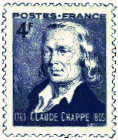
History
The
telegraph was invented by Claude Chappe (1763 - 1805). The Chappe
brothers carried out on March 3, 1791 a first public experiment
of air telegraph of Brûlon with Parcé on a distance
of 14 km. The air telegraphs were adopted on July 26, 1793 by
national Convention. July 16, 1794 the first official line Paris-Lille
was brought into service.
In a few years, 5000 km of network and nearly 533 stations were
set up, covering a significant part of the French territory.
The success
of the optical telegraph grew blurred and Bonaparte reduced into
1800 the appropriations aloués to their construction and
maintenance. Claude Chappe did not support this disavowal and
desperate threw itself in a well in 1805 at the 42 years age.
The brothers continued the development of the optical telegraph
until 1830, date on which it was definitively stopped.
The defect
of the telegraph of Cap is that it does not function during the
night and by time of fog. This defect had a considerable importance
in the French history: At the time of the return of Napoleon
during the hundred days, this one unloaded on March 1, 1815 with
1200 men with the Gulf Juan, but Paris, then under the reign
of Louis XVIII, learned it by the telegraph from Cap only on
March 5, 1815, due to fog. So Napoleon was not intercepted (without
success) only with the lake of LAFFREY right before Grenoble,
March 7, 1815.
The telegraph of Cap was replaced
then by the electric telegraph.
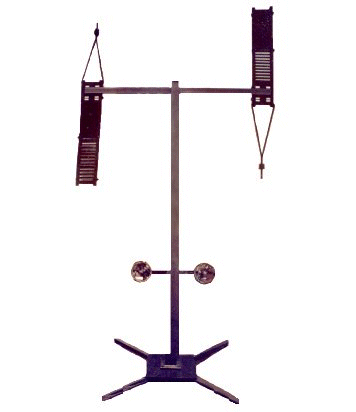 Principle of operation
Principle of operation
the telegraph of the Chappe brothers is a 5 height m mechanical
device made up:
- of two wings or indicators 2 meters length and 30 cm broad.
- counterweight to ensure the balance of the unit.
- of a manipulator to put moving the wings.
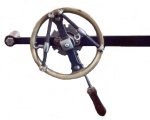
Detail
of a manipulator of the Chappe's telegraph exposed to the Museum
The Chappe
telegraph was placed on a natural height (hill, mountain) or
artificial (turn).
The Chappe's telegraph at the
Museum
Animated gif by Philippe Morin
The manipulator
modified the position of the wings to transmit a message according
to an established code. This visible message by far was observed
using glasses. 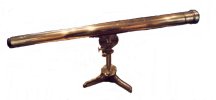
Telescop for Chappes'
telescop at the Museum
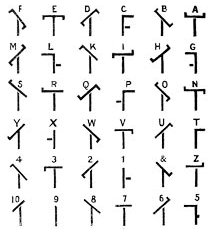
The codes used were not the
same ones according to countries' but the objectives remained
identical: speed of transmission and confidentiality of the message.
An original
apparatus: The
electric telegraph with signals Cap In 1850, i.e. approximately
17 years after the realization of the first electric needle telegraphs,
an apparatus was developed by associating the modern techniques
of the electric telegraph and that of the Chappe telegraph.
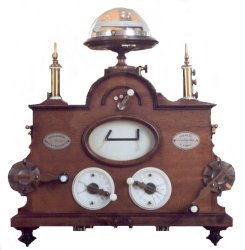 The electric telegraph
with Chappe's signals at the Museum
The electric telegraph
with Chappe's signals at the Museum
This telegraph
was then replaced by the recording telegraphs (Morse, Wheastone)
which made it possible to keep a trace of the message sent
To discover
the evolution of the telegraphs, click on one of the images of
the electric telegraphs with wire.
The pictures are placed
by chronological apparition time of telegraph |